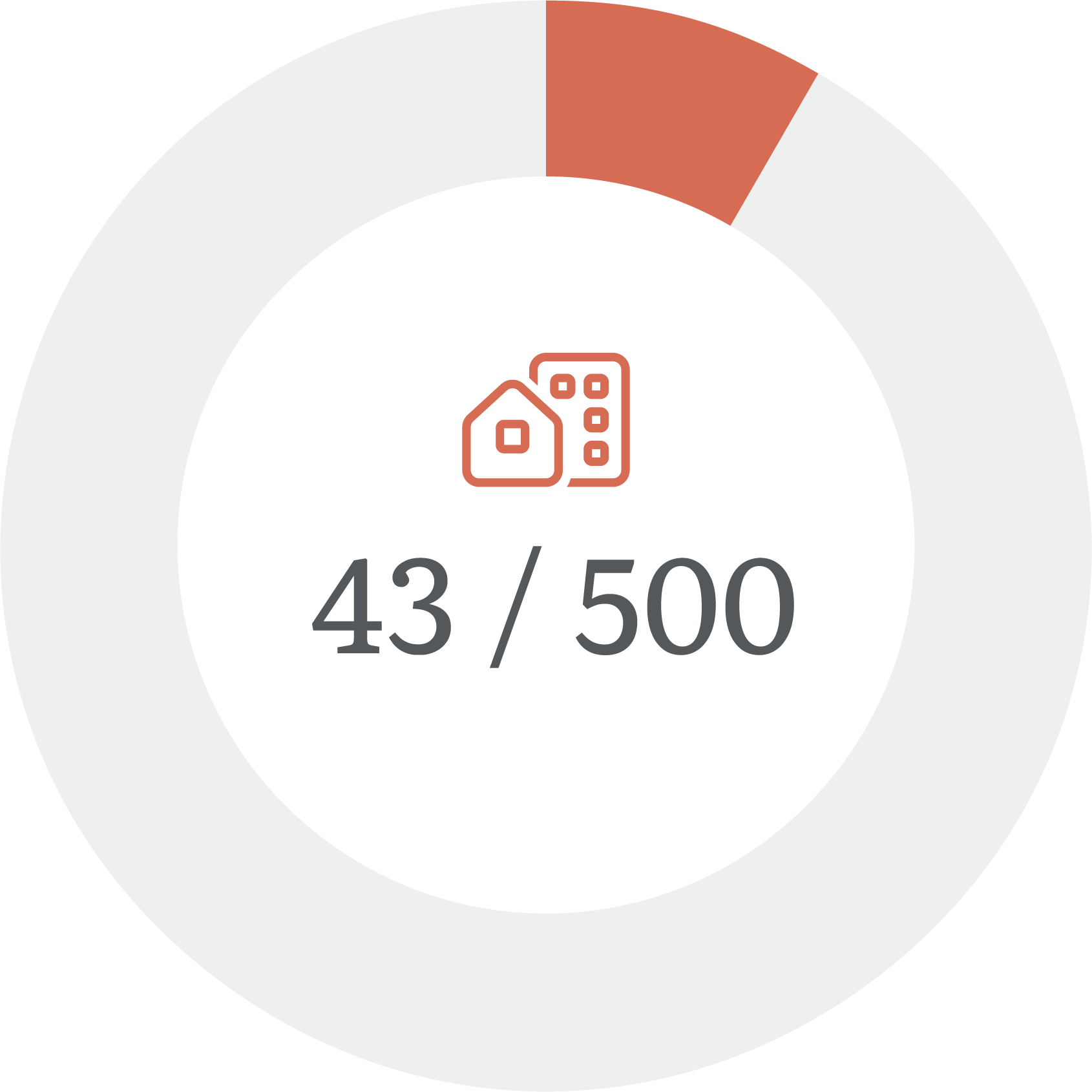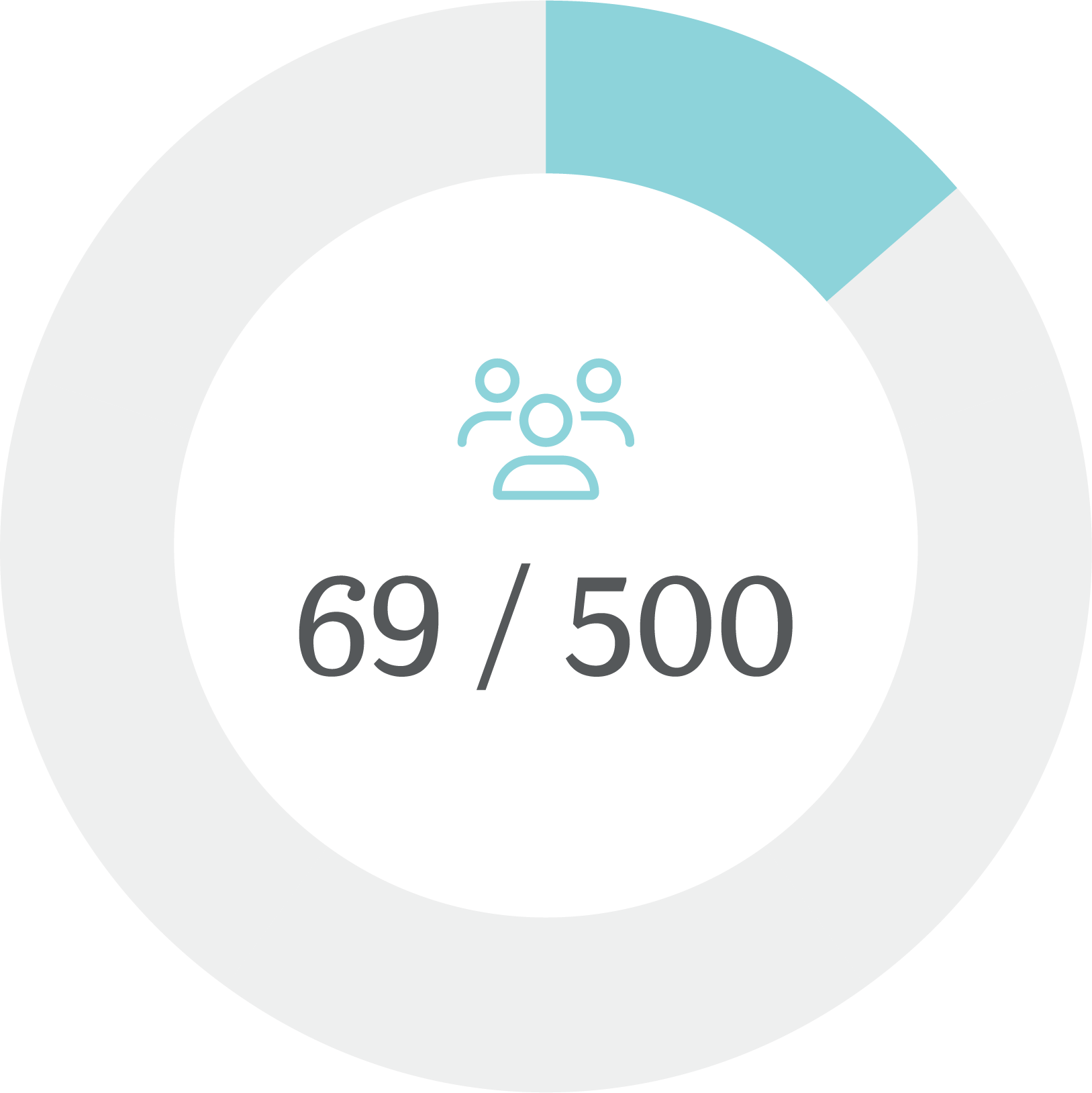Homelessness increased dramatically since 2020.
People are squeezed by high prices, low housing inventory and crumbling buildings.
For the first time in 2020, unsheltered homelessness surpassed sheltered homelessness nationally.
Allegheny County has seen a steep rise as well. Unsheltered homelessness has increased by over 100 percent since 2021, rising from 65 people that year to over 150 people in 2023 and 2024.
In 2023, more than 4,000 of our neighbors found themselves in emergency shelter.
Length of stay has increased as housing costs have increased and people have found it difficult to find affordable housing.
People staying in shelter today have fewer needs.
Many people are experiencing homelessness for the first time and have some income.
What We’re Doing
We are focusing on three strategies in partnership with both housing authorities (public housing) and developers (private housing):
Prioritizing existing rental units for people exiting shelter as current tenants leave.
Accelerating efforts to repair empty rental units so they can become available to new tenants.
Converting facilities that do not require extensive modification (such as nursing homes or motels) to residential use for those exiting shelter.
Measuring Success
We are measuring success in two ways: numbers and stories. Two numbers we’re tracking are how many housing units we’ve created through this initiative, and how many people have moved from shelters into housing. To hear the stories behind the numbers, click the button below.


- Housing Units Created
- People Moved into Housing

- Units Created

- Units Filled
Property owners have committed an additional 55 units where matching is in process, or which will be move-in ready at a later date.
How You Can Help
Property Owners & Landlords
If you own or manage a building with units that you would like make available to individuals exiting our homeless shelters, please contact Chuck Keenan at the Allegheny Department of Human Services. We are excited to talk with you!
Everyone
Welcome people in your community. Our unhoused neighbors are just that – our neighbors and members of our community – who want to be welcomed and treated with dignity and respect, just like anyone else.
Stories of Community Members Being Served
A medical emergency, a sudden layoff, a poor decision, or unexpected car or home repairs—many of us are just one paycheck away from a housing crisis. The rising cost of housing has made the threat of homelessness more real than ever. We spoke with individuals in shelters waiting for affordable housing, as well as those who have successfully transitioned to safe and affordable living situations. They shared their stories to demystify homelessness and remind us that these individuals are our neighbors, our families, our friends—and perhaps even ourselves.
Frequently Asked Questions
The goal is to make 500 units available to people in Allegheny County’s homeless shelters within 500 days of launch on June 6, 2024. With these 500 units, individuals will spend less time in shelter, and shelter beds will be available to those who need them.
Since COVID, a growing number of people are becoming stuck in homeless shelters because of a lack of available, affordable rental units. Shelter stays are too long, and shelter beds have become scarce. Increasing the flow out of shelters supports those who are in shelter in their move to stability and makes shelter beds available to those who have nowhere else to turn and who are living on the street.
Allegheny County Department of Human Services produces an annual count in addition to weekly updates. On January 30, 2024, in Allegheny County, 1,026 individuals were staying in emergency shelters or experiencing unsheltered homelessness. For more information please review the Point-in-Time Count Annual Report.
The 500 in 500 initiative is engaging people who have relatively low needs for social services and whose stay in shelter has been lengthened due to barriers in achieving stable housing, such as high rents, employment challenges, etc.
We are using the Allegheny Housing Assessment to identify people who are low risk and could benefit from 500 in 500. For people with high-risk/vulnerability, the Department of Human Services has extensive programming through Rapid Rehousing and Permanent Supportive Housing programs.
For a detailed description of the Allegheny Housing Assessment, please review the reports and FAQs located here.
You’ll see the chart above shows two progress indicators: the number of housing units created and the number of people moved into housing. (Note: DHS modified the reportable measures since launch; see note on the chart.)
We are measuring success for the initiative in three ways: making shelter stays shorter, moving more people to stability, and supporting people to stay in their homes (to avoid re-entering shelter). See the “Measuring Success” section above for more information.
It is true that developing new housing units is a long endeavor but 500 in 500 does not depend on ground up construction of new affordable housing. Rather, this initiative relies on intergovernmental and public/private partnerships to: (1) prioritize some existing publicly-held and privately-held rental units for those exiting shelter; (2) accelerate efforts to make repairs to empty public and private rental units so that people exiting shelter may access those units; and (3) convert facilities that do not require extensive modification (such as nursing homes or motels) to residential use for people exiting shelter.
Right now, the shelters are crowded, people are staying a long time, and sometimes all we can offer people staying on the street is space in an overflow shelter which may simply be a mat on the floor. By helping people who have stabilized in shelter exit to housing more quickly, we will create more room in the shelter system for people staying in a tent or on the street.
The Department of Human Services has programs to support this group. In fact, the majority of the federal funding DHS receives is used to support the most vulnerable and chronically homeless in programs we refer to as Rapid Rehousing and Permanent Supportive Housing. At any given time, about 1,000 single-adult households are active in one of these housing programs. And each year, about 400 new single adults become enrolled in these programs as other people exit these programs and vacancies are filled. This work will continue. The 500 in 500 initiative is about providing new and needed housing support for lower need people that we didn’t have supports for in the past.
Yes, just like single-adult households, households with children are also benefiting from the initiative. The two populations are different in many ways and stay at different shelters. Families who have high needs for social services/higher vulnerability are prioritized for Rapid Rehousing and Permanent Supportive Housing. At any given time, about 400 families with children are active in one of these housing programs. And each year over 100 new families become enrolled in these programs.
To prevent homelessness and assist those experiencing homelessness, Allegheny County is the lead local agency and follows a “continuum of care” approach in partnership with the City of Pittsburgh, surrounding municipalities, healthcare providers, non-profit organizations, the business community, and others.
The County oversees a coordinated entry system that connects people in need to a network of street outreach teams, street medicine teams, emergency shelters, bridge housing, rapid rehousing, permanent supportive housing, and the wraparound services to help individuals get the care and assistance they need.
More information about the Allegheny County Continuum of Care can be found here.
The Allegheny County homeless system has 12 year-round shelters for individuals and 11 year-round shelters for families with children, in addition to six seasonal shelters for individuals. For information on how to access the shelter system please visit Allegheny Connect.
In 2023, approximately 4,300 single individuals and family members used a shelter in Allegheny County. For more information about the characteristics of people using shelters in Allegheny County, please refer to the following reports:
Families using emergency shelters in Allegheny County
People using adult-only emergency shelters in Allegheny County
The Allegheny County Department of Human Services (ACDHS) receives three annual awards directed at preventing and ending homelessness. From the federal level, the U.S. Department of Housing and Urban Development’s (HUD) Continuum of Care (CoC) and Emergency Solution Grant (ESG) Programs provided approximately $23 million and $1.2 million in funding for homelessness last fiscal year, respectively. At the state level, the PA Department of Human Services’ (PA DHS) Homeless Assistance Program (HAP) allocated $2.6 million to ACDHS for homeless services.
These annual awards are not adequate for supporting homeless-related expenditures. To make up for this shortfall, ACDHS has needed to:
- Supplement its state Homeless Assistance Program (HAP) award with Human Services Block Grant funding initially allocated for other categorical programs (such as mental health, drug and alcohol, and others). In SFY23, ACDHS had more than $13 million in total HAP expenses –$10 million more than it was awarded.
- Rely on child welfare system funding to offer services to families with children in need. In SFY23, ACDHS used $2.5 million of its child welfare funding to offer homelessness services and supports to families with children.
- Leverage smaller, often temporary, grants from sources like the Urban Redevelopment Authority (URA), PHFA, and foundations.


